A client recently left two trees with me for repotting. One was a Larch whilst the other was a Scots Pine. Both trees were old and probably collected from the wild. This two part article will continue their story.
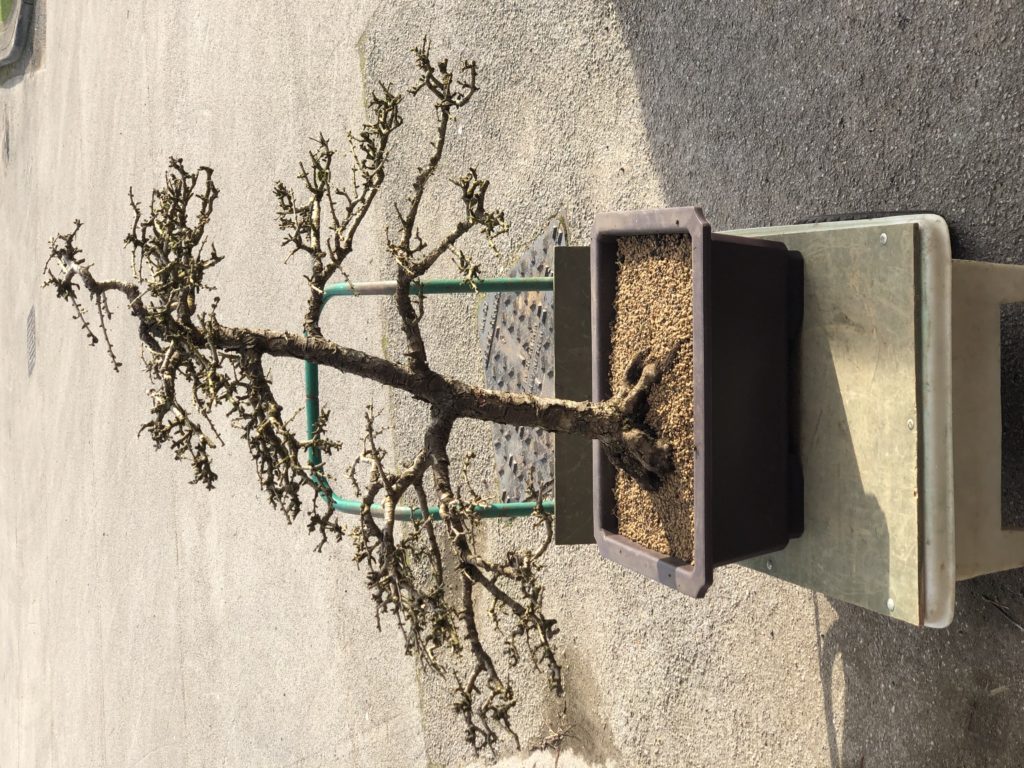
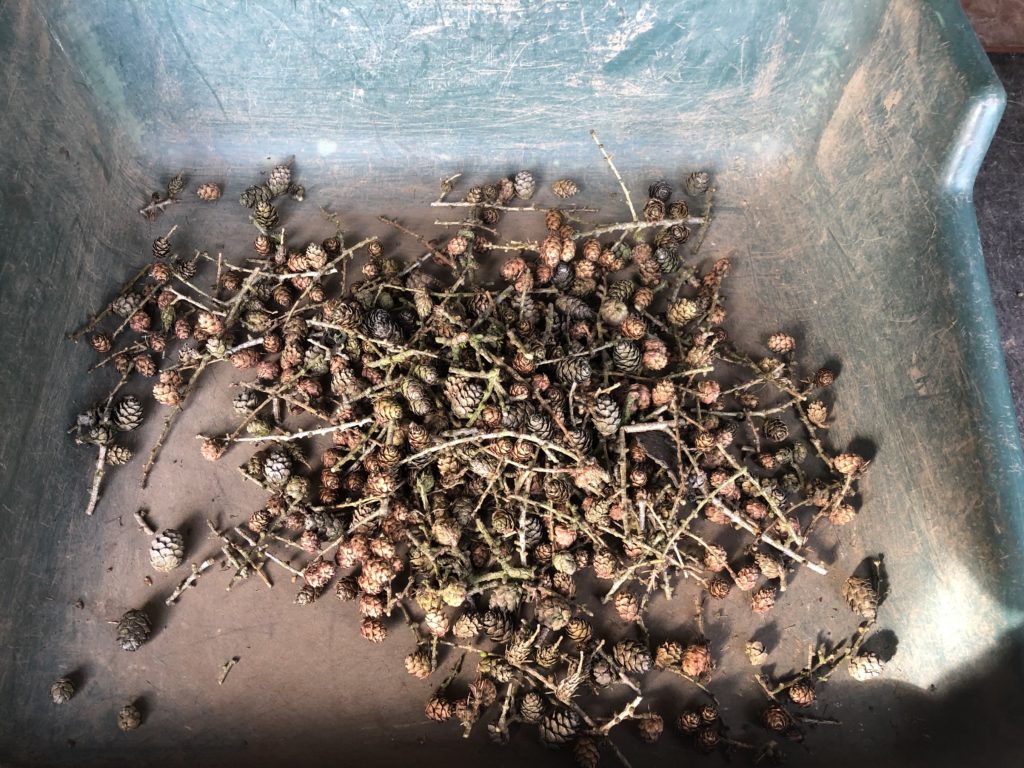
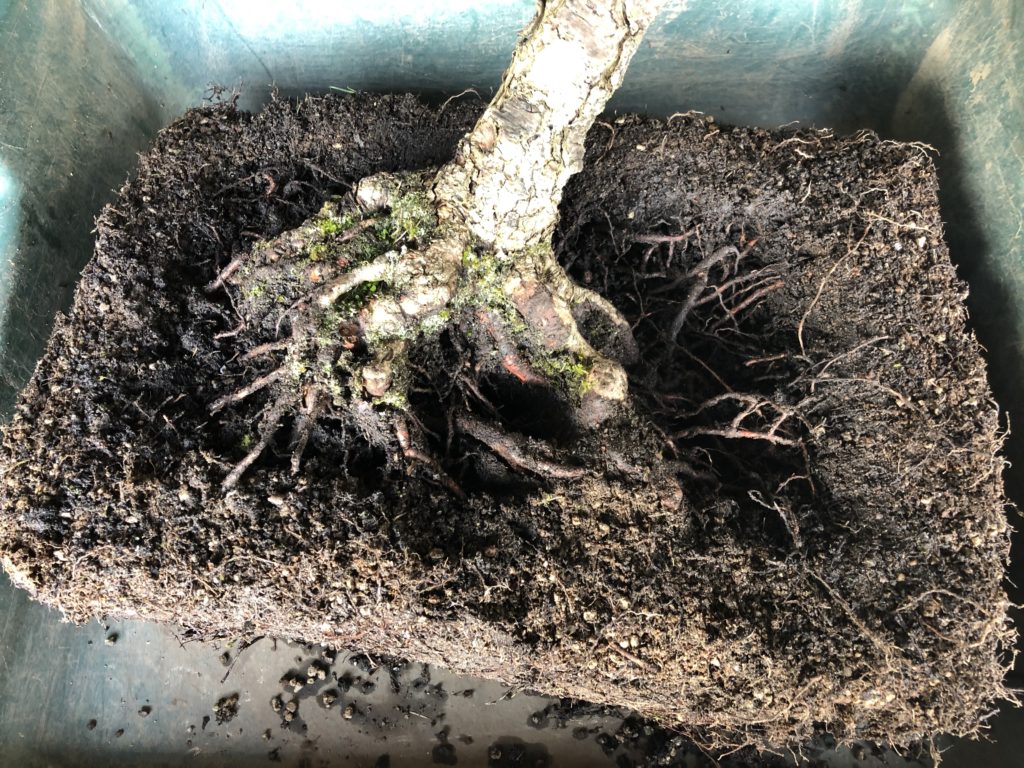
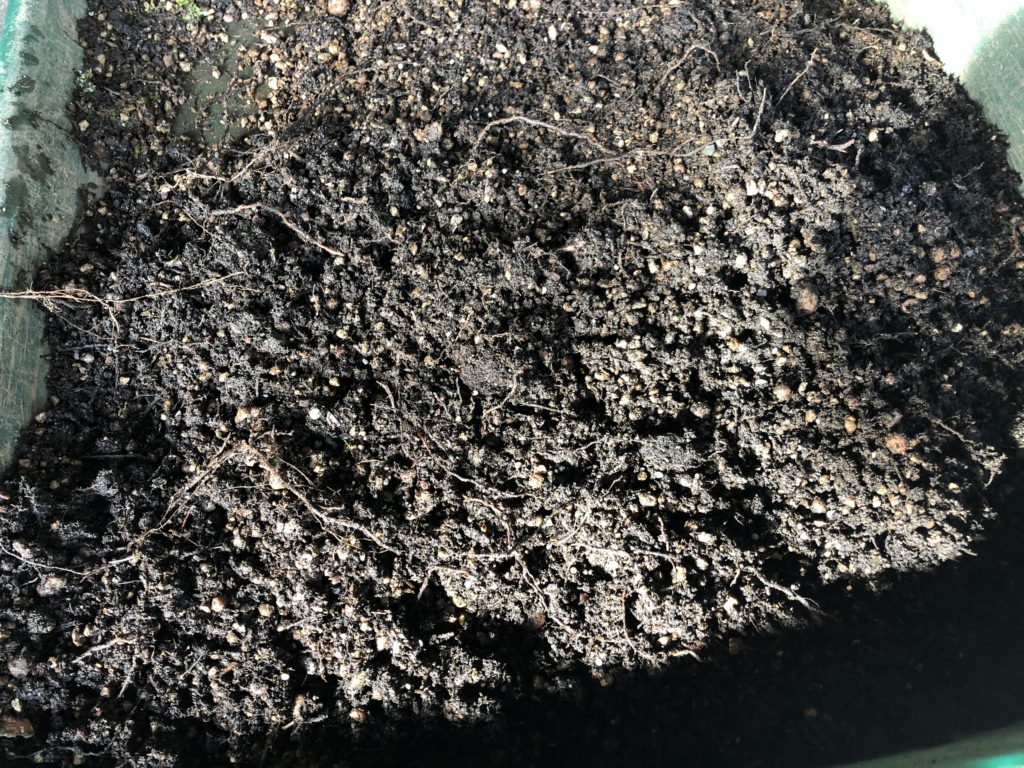
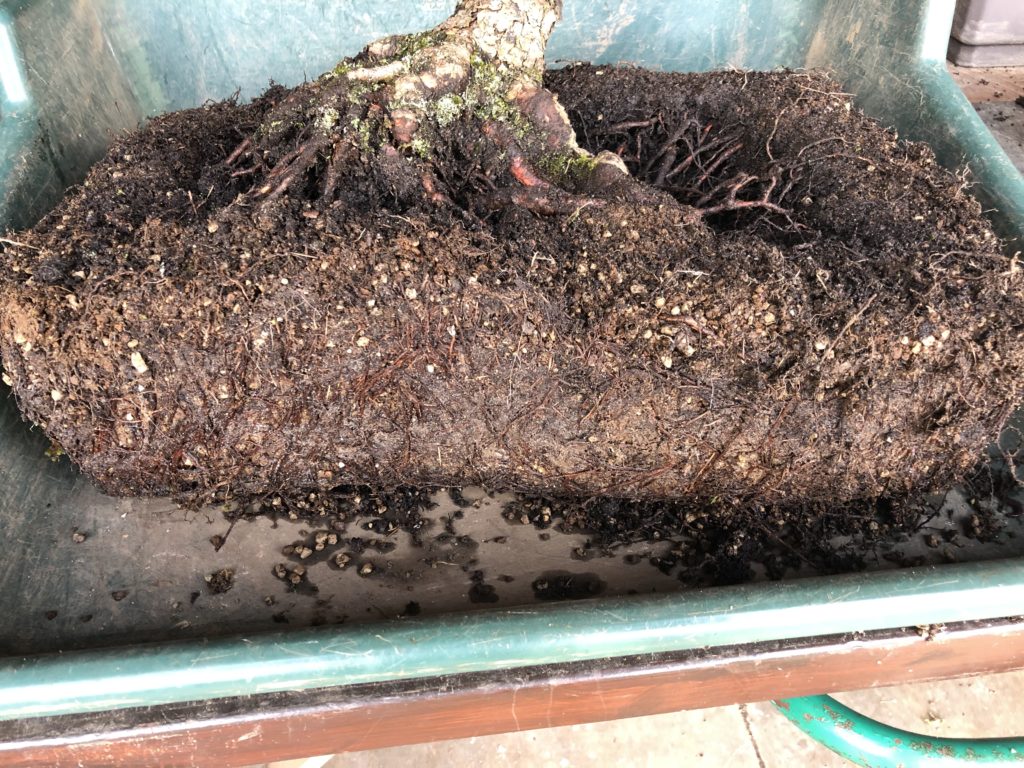
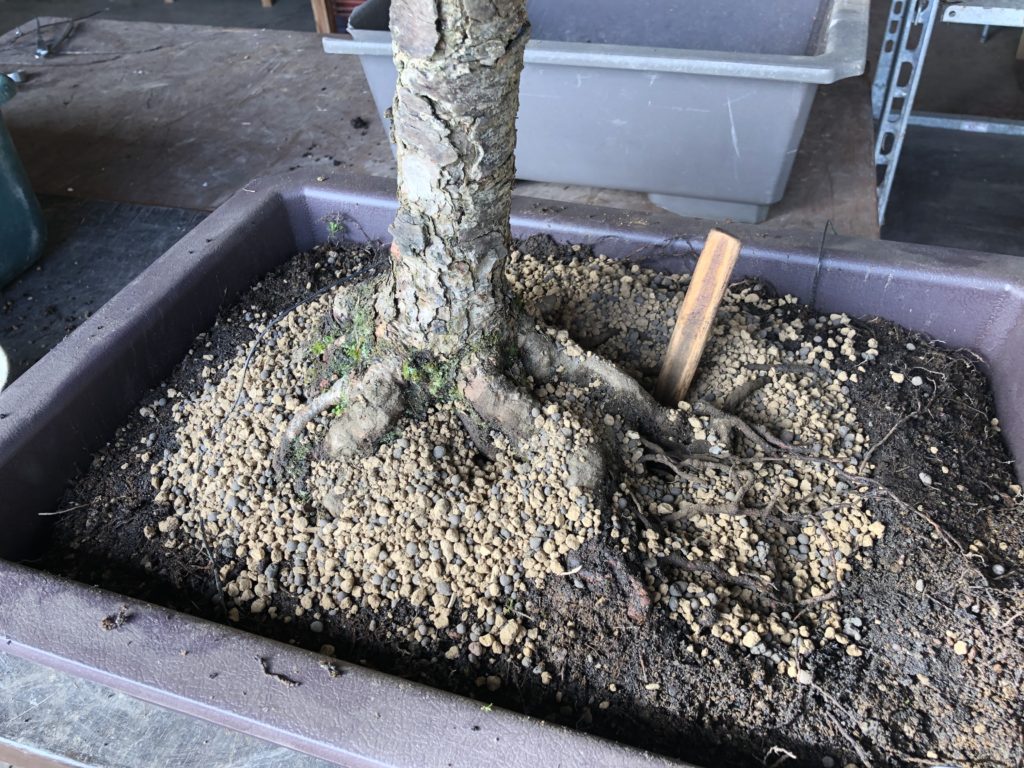
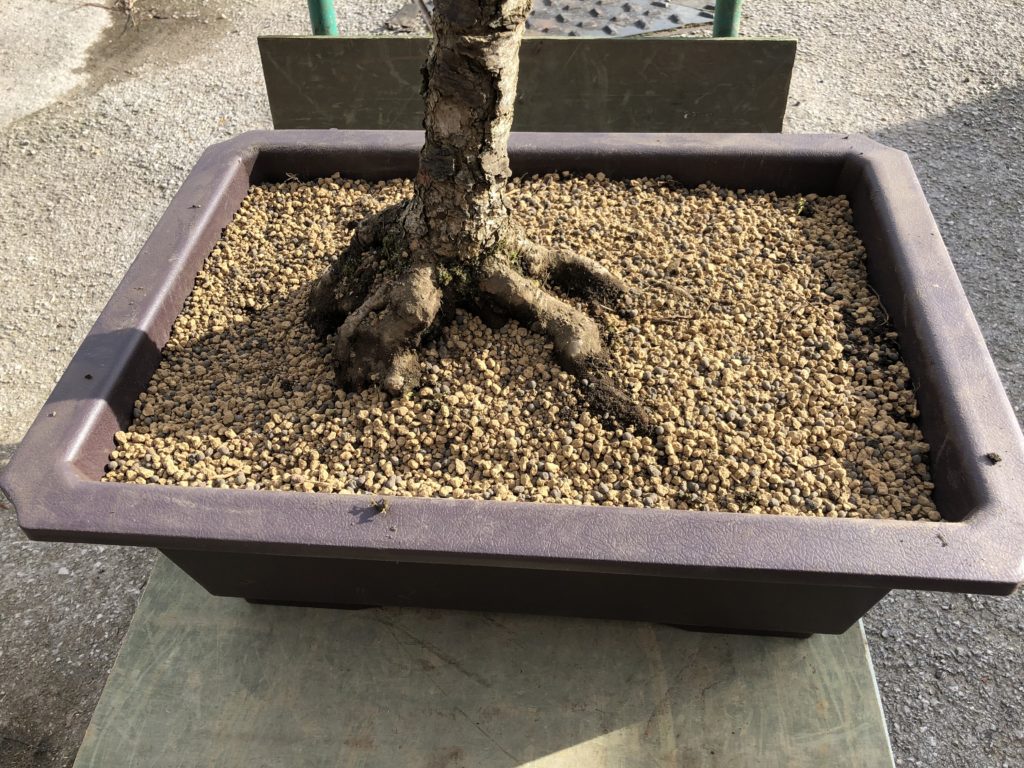
In 2 to 3 years time the tree can be repotted in the more traditional manner of dealing with the outer roots…..trimming them back and adding new compost.
At the end of this work we will have changed all the compost in the pot whilst minimising the stress to the tree and enabling him to continue his recovery to being strong and healthy.
